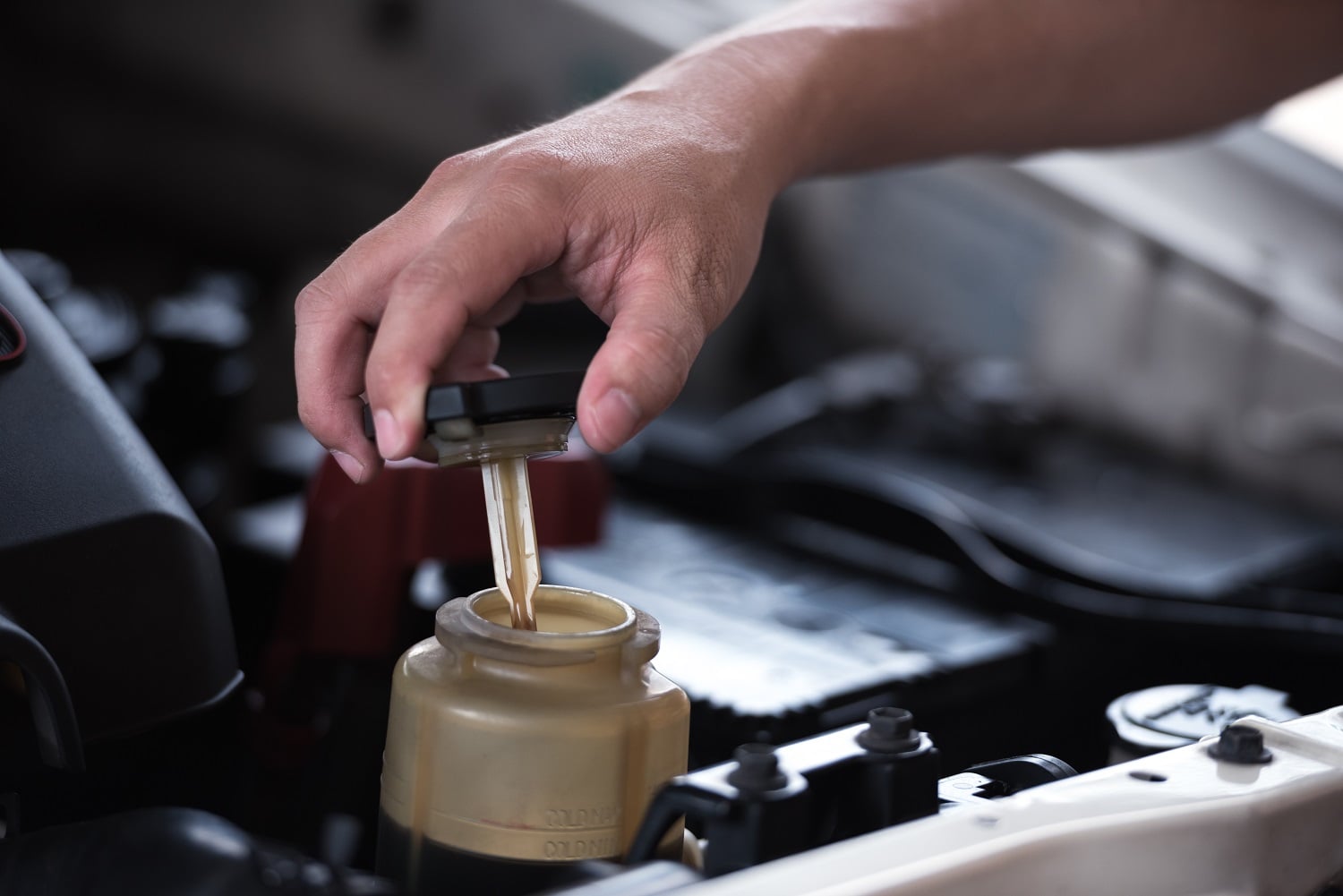
As you can see when turning the wheels of a 5,000-pound truck with one hand, power steering systems are designed to make driving easier. To reduce parasitic drag on the engine, many contemporary automobiles use speed-sensitive electronic power steering. Most, on the other hand, continue to employ hydraulic power assist, using a belt-driven pump, exactly as they did 60 years ago. It’s time to change the power steering fluid if you hear a whine from the engine when turning the steering wheel, if the steering wheel requires a lot of effort to turn, or if the fluid is black.
Experts dispute on how often power steering fluid should be replaced, with estimates ranging from 24,000 to 100,000 miles on the internet. Your best bet for timing and suggested fluid is to examine your owner’s manual.
Read also: How To Repair Or Replace a Catalytic Converter
These are the different steps that can be taken to change the power steering fluid:
Lift The Car With a Jack
Lift the car using a jack and make sure the front wheels are at a suitable height to allow you to slide beneath it easily. Because you’ll be moving the steering wheel, jack stands are recommended to allow the tires to move freely.
Locate and Remove the Catch Tray
Under the power steering system, locate and remove the catch tray. Some vehicles will lack a catch tray. If you’re still unsure, see your owner’s manual. If there is any liquid in this tray, you most likely have a leak and should take your automobile to a repair. Place a disposable pan directly beneath the catch tray to catch the fluid when it is flushed. If you’re a car expert, make sure the line from the power steering rack to the reservoir is disconnected. While this isn’t technically necessary, it will eliminate more fluid and improve flushing.
Drain The Power Steering Fluid
Disconnect the low-pressure pipe from the steering pump at its lowest point to drain the power steering fluid. Multiple thin (1/2-1″) pipes will run from your power steering system. Unhook this line and drain the old fluid while keeping your pan ready underneath. As soon as you disconnect it, the fluid will start to flow. Long sleeved shirts, gloves, and eye protection are all suggested.
Unscrew The Power Steering Reservoir Cap
Remove the cap from the power steering reservoir and fill it halfway with power steering fluid according to the manufacturer’s recommendations. You’ll need to remove the air bubbles and push out the rest of the fluid in the hoses to completely cleanse the system. Before continuing on, fill it about halfway.
Turn The Car On and Add More Fluid
Start the car and add extra fluid to the reservoir until it is half filled. Having a friend start the car while you pour is typically the most convenient option. You should keep a watch on the draining fluid as well as the reservoir’s current level. Shut off the car when the draining fluid is plainly new. As you pour, have your friend turn the wheel back and forth. This will aid in the removal of air from the wires. As you fill it, the fluid will most likely bubble. This is beneficial because it indicates that the air in the system is being flushed out.
Reattach The Power Steering Line
After you’ve turned the car off, reconnect the power steering line. Because power steering fluid isn’t particularly thick, closing the line up when you’ve finished working shouldn’t be difficult. After the fluid has been drained, turn off the automobile and reconnect everything as it was.
Fill the reservoir up
Close the reservoir after filling it to the recommended level. Fill the reservoir to the recommended level once the air has been removed and the line has been closed.
Start The Car Engine
Start the engine and rotate the steering wheel for five minutes from one locked position to the other. If you hear a buzzing sound, it means there is air trapped in the system. Continue turning the steering wheel until the fluid is circulated adequately throughout the system, releasing any trapped air.
Turn Car Off and Top More Fluid
Turn the car off and add more fluid to the reservoir. After you test the steering wheel, your fluid level will most likely appear to drop. Because fluid is being pulled from the reservoir and into the lines, this is the case. To conclude the job, fill the reservoir with more power steering fluid.
Read also: How To Avoid Overheating in Cars
Check If Steering Wheel Is Working Fine
When the vehicle’s weight is on the tires, check that the steering wheel is working properly. Turn the car on and back and forth with the steering wheel. Ascertain that the wheels can turn normally. If they don’t, bleed and refill the system again.
These steps should help you change the power steering fluid. If you cannot do it by yourself, why not seek the help of a mechanic.








